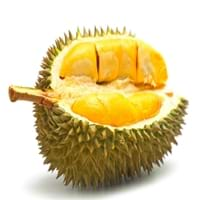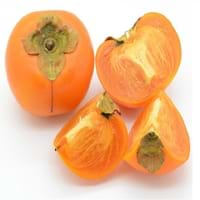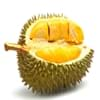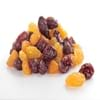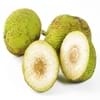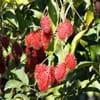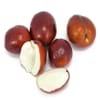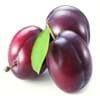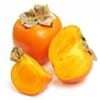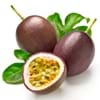Health Benefits
Anti depressant, Boosts immune system, Cancer prevention, Heart care, Reduces stress
Cancer prevention, Heart care, Heat stroke treatment, Improves eye vision, Weight loss properties
General Benefits
Anti oxidant properties, Anti-inflammatory properties, Boosts immune system, Controls blood pressure, Controls blood sugar levels, Digestive aid, Flu treatment, Strengthens bones
Anti-inflammatory properties, Boosts immune system, Cures cough, Digestive aid, Fights against infections, Improves blood circulation
Skin Benefits
Anti-aging benefits, Brightens and lightens complexion
Anti-aging benefits, Brightens and lightens complexion, Reduces wrinkles
Hair Benefits
Promotes longer and healthier hair, Protects hair
Promotes longer and healthier hair, Protects hair
Allergy Symptoms
Diarrhea, Headaches, Hives, Nasal congestion, Red rash, Runny nose, Vomiting
Abdominal pains, Anaphylaxis, Inflammation
Side Effects
Affects blood glucose levels, Nausea, Stomach pain
Diarrhoea, Might affect blood pressure level
Best Time to Eat
Along with meal, As a snack in the late afternoon, Don't consume at night and before bed, Morning time (before lunch)
Along with meal, As a snack in the late afternoon, Don't consume at night and before bed, Morning time (before lunch)
Vitamin B5 (Pantothenic Acid)
Not Available
Vitamin C (Ascorbic Acid)
Vitamin E (Tocopherole)
Not Available
Vitamin K (Phyllochinone)
Not Available
Lutein+Zeaxanthin
Not Available
Phytosterol
Not Available
Calories in Fresh Fruit with Peel
Not Available
Calories in Fresh Fruit without Peel
Not Available
Calories in Frozen Form
Not Available
Calories in Canned Form
Not Available
Not Available
Calories in Pie
Not Available
Type
Tree fruit, Tropical
Berry, Tree fruit
Season
Monsoon
Autumn, Winter
Varieties
D24, D99 (Gob kecil), D123 (Chanee), D145 (Beserah), D158 (Gan Yau), D159 (Monthong), D169 (Tok Litok), D188, D189, D190, D163 (Hor Lor) and D164 (Ang Bak)
Fuyu, Jiro, Gosho, Suruga, Hiratanenashi, Hachiya, Aizumishirazu, Yotsumizo, Yokono, Costata, Ormond and Tamopan
Color
Green
Orange, Red, Yellow
Inside Color
Yellow
Orange
Taste
Creamy, Sweet
Sweet
Origin
South-Eastern Asia
Burma, China, India, Japan
Grows on
Not Available
Trees
Soil Type
Clay
Sandy loam, Well-drained
Climatic Conditions
Hot, Humid
Can tolerate wide range of climates
Facts about
- 1 kg of durian contains 1350 calories which may cause weight gain.
- It may have a hyperthermic effect on the body, making you feel warmer.
- Study shows that durian has an ability to reduce infertility in men & women.
- Unripe persimmons contain lots of tannin which is used to brew sake & to preserve wood in Japan.
- A small non-edible fruit of persimmon tree is crushed with water, the solution is painted on paper & used to repel mosquitoes.
Cocktails
No
Not Available
Top Producer
Thailand
China
Other Countries
Indonesia, Malaysia, Philippines
Azerbaijan, Brazil, Israel, Italy, Japan, Pakistan
Top Importer
China
United States of America
Top Exporter
Thailand
Japan
Botanical Name
Durio zibethinus
Diospyros kaki
Synonym
Lahia Hassk
Not Available
Subkingdom
Tracheobionta
Tracheobionta
Division
Magnoliophyta
Magnoliophyta
Class
Magnoliopsida
Magnoliopsida
Subclass
Dillenhidae
Dillenhidae
Family
Malvaceae
Ebenaceae
Species
D. zibethinus
D. kaki
Generic Group
Not Available
Not Available
Difference Between Durian and Japanese Persimmon
We might think that Durian and Japanese Persimmon are similar with respect to nutritional value and health benefits. But the nutrient content of both fruits is different. Durian and Japanese Persimmon Facts such as their taste, shape, color, and size are also distinct. The difference between Durian and Japanese Persimmon is explained here.
The amount of calories in 100 gm of fresh Durian and Japanese Persimmon with peel is Not Available and 70.00 kcal and the amount of calories without peel is 147.00 kcal and Not Available respectively. Thus, Durian and Japanese Persimmon belong to High Calorie Fruits and Low Calorie Fruits category.These fruits might or might not differ with respect to their scientific classification. The order of Durian and Japanese Persimmon is Malvales and Ericales respectively. Durian belongs to Malvaceae family and Japanese Persimmon belongs to Ebenaceae family. Durian belongs to Durio genus of D. zibethinus species and Japanese Persimmon belongs to Diospyros genus of D. kaki species. Beings plants, both fruits belong to Plantae Kingdom.
